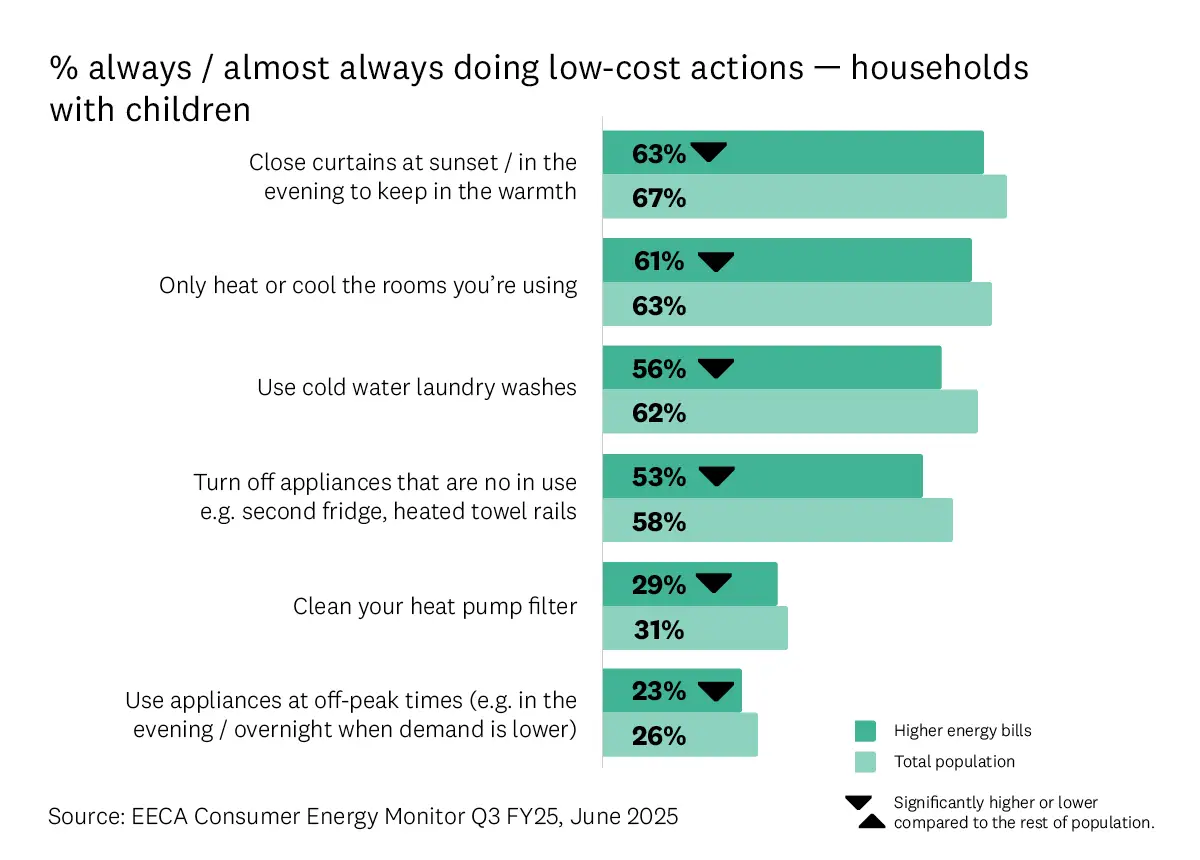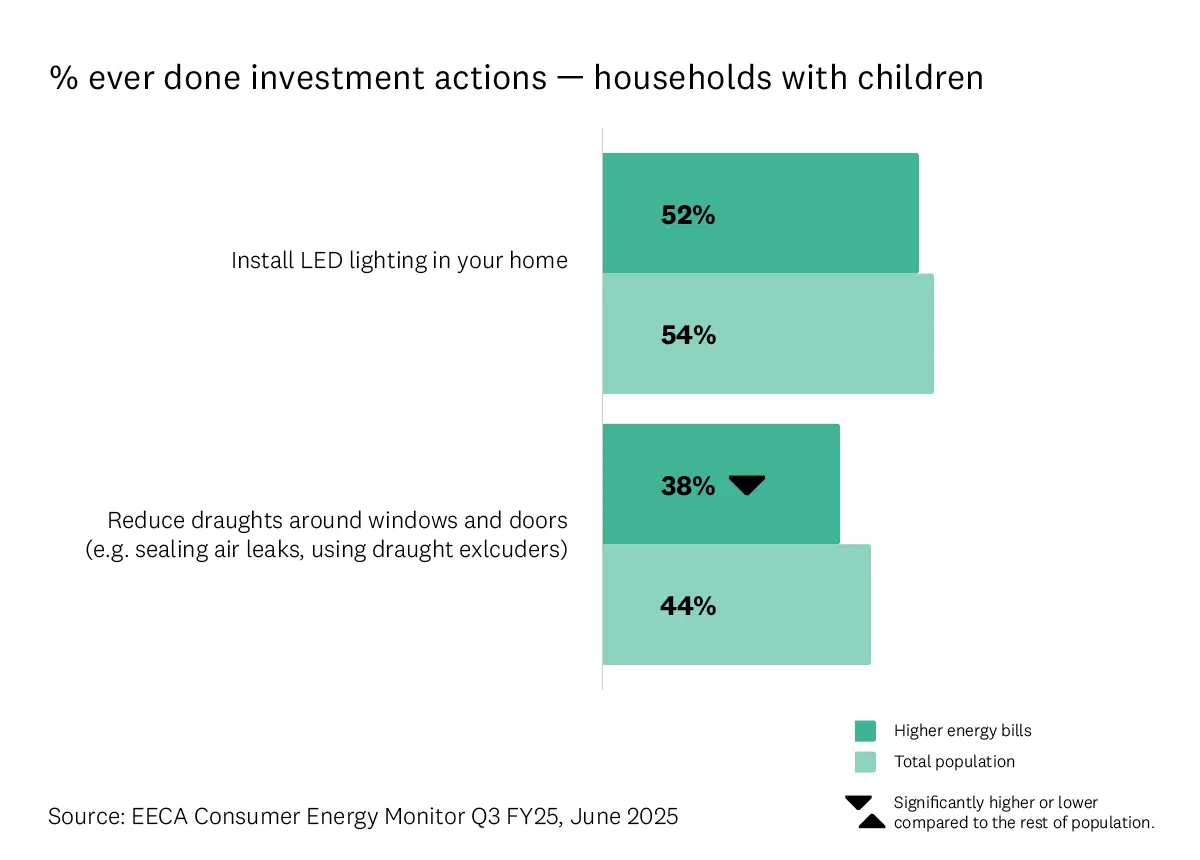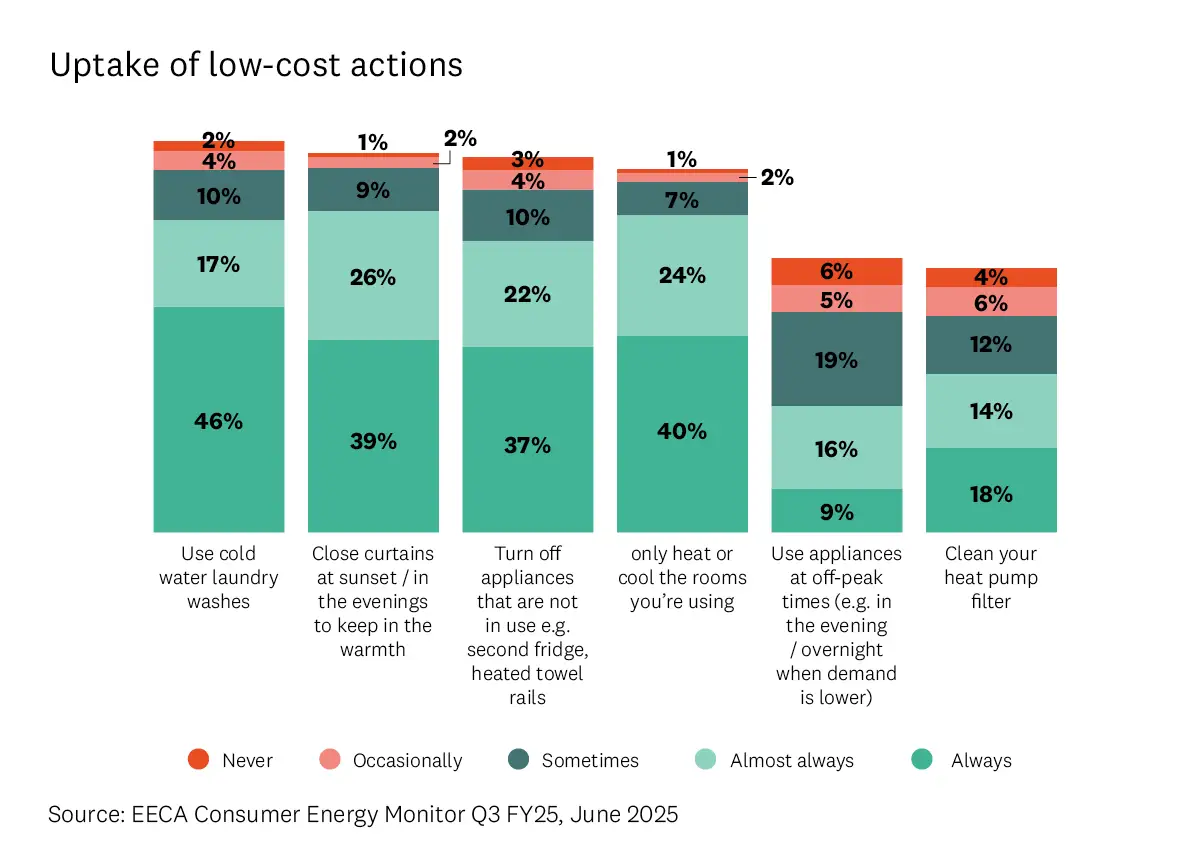The Consumer Energy Monitor captures data on how New Zealanders are interacting with energy in their homes, both as a snapshot and how this develops over time. Alongside broader behavioural and attitudinal trends, this on-going research gives EECA evidence that helps shape our programmes and understand the impact of our interventions.
This report dives deep into different types of households and their awareness and commitment to energy-efficient, money-saving actions they can take in their homes. It also investigates households’ actions around off-peak power plans including their uptake and use.
Overview
This study is designed to understand New Zealanders’ relationship with energy.
The monitor captures data on how New Zealanders are using energy in their homes. Alongside broader behavioural and attitudinal trends, this study allows EECA to assess how to further empower households to use energy more efficiently.
This quarter, 758 respondents took part in the study. The survey period was 19 January to 22 March 2025.
Key findings
The findings of this report focus on households that have lower awareness and commitment to energy efficiency actions, and as a result have a lot to gain from shifting their behaviours. These sub-groups include:
- Households with higher electricity bills
- People who do not perceive their homes as warm
- Households with children
- Non-homeowners
While there is generally good awareness of these actions among households, there is not necessarily regular application in the home.
EECA found that households with children and households with high energy bills have the lowest levels of commitment to energy efficiency actions, and as a result stand to gain the most from changing their energy-related behaviours and investments.
New Zealanders tend to have a good level of awareness of most energy efficiency actions.
However, awareness could be improved around shifting the use of appliances to off-peak times (55% aware), and to clean heat pump filters to help save on their power bills (54% aware).
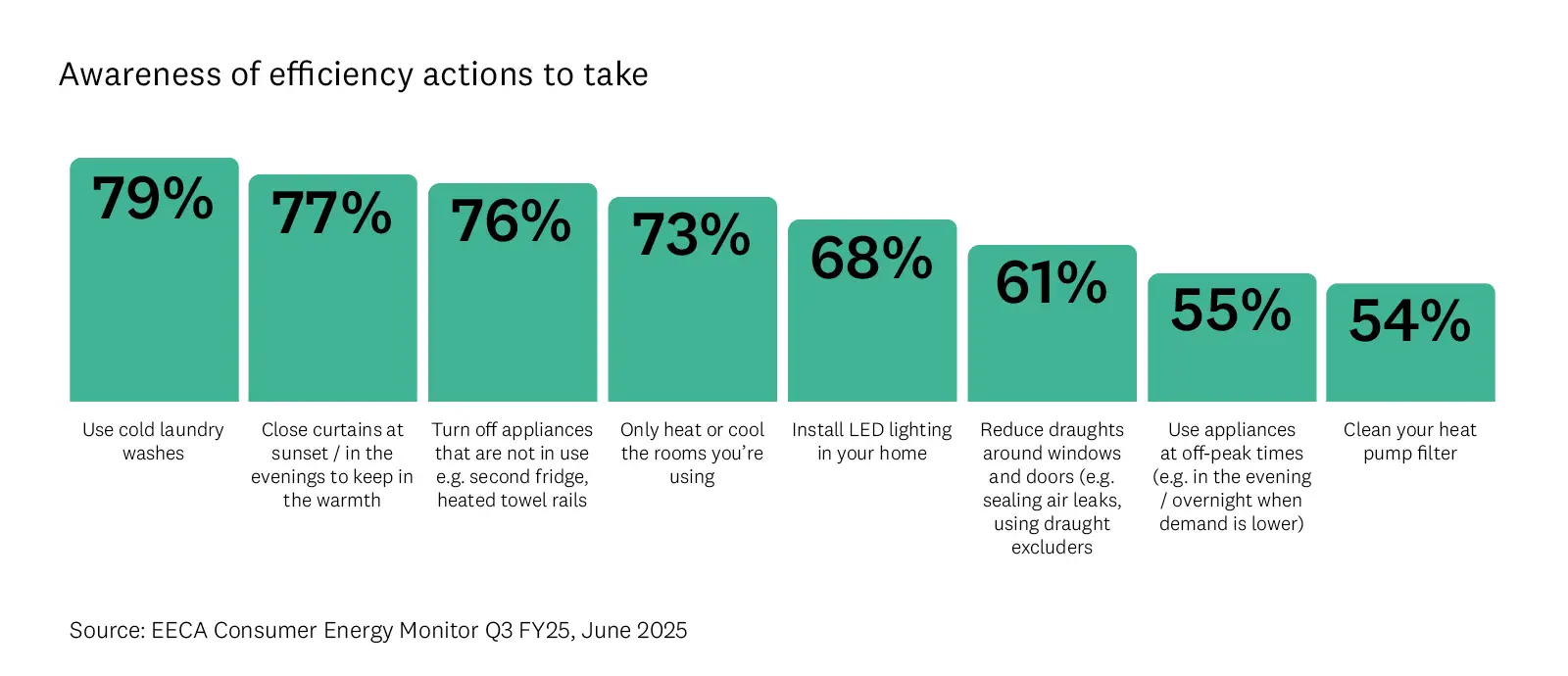
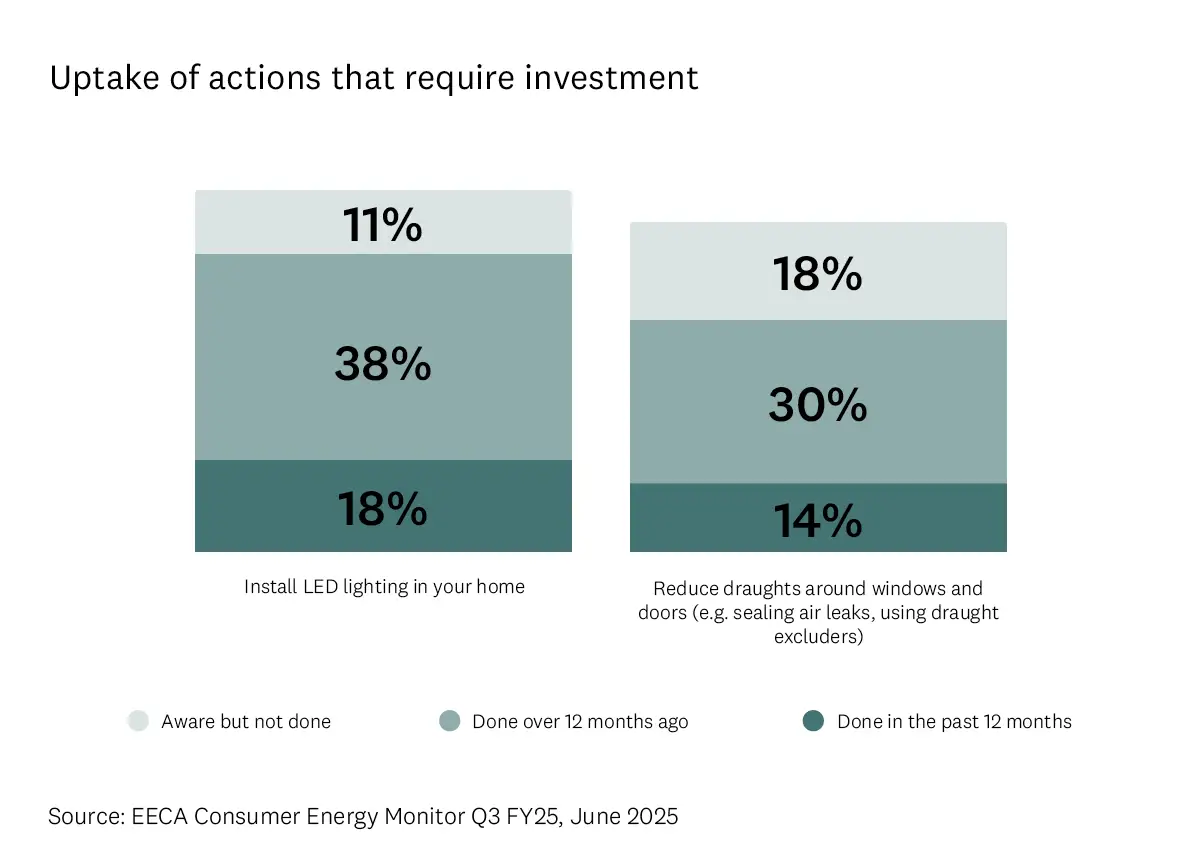
Households with higher electricity bills could make easy gains on efficiencies and reduce energy usage.
These households are less likely to be taking actions that could save them hundreds of dollars each year. The greatest relative gains for these households could be found in closing curtains in the evening, only heating rooms in use, using cold water washes, turning off unused appliances.
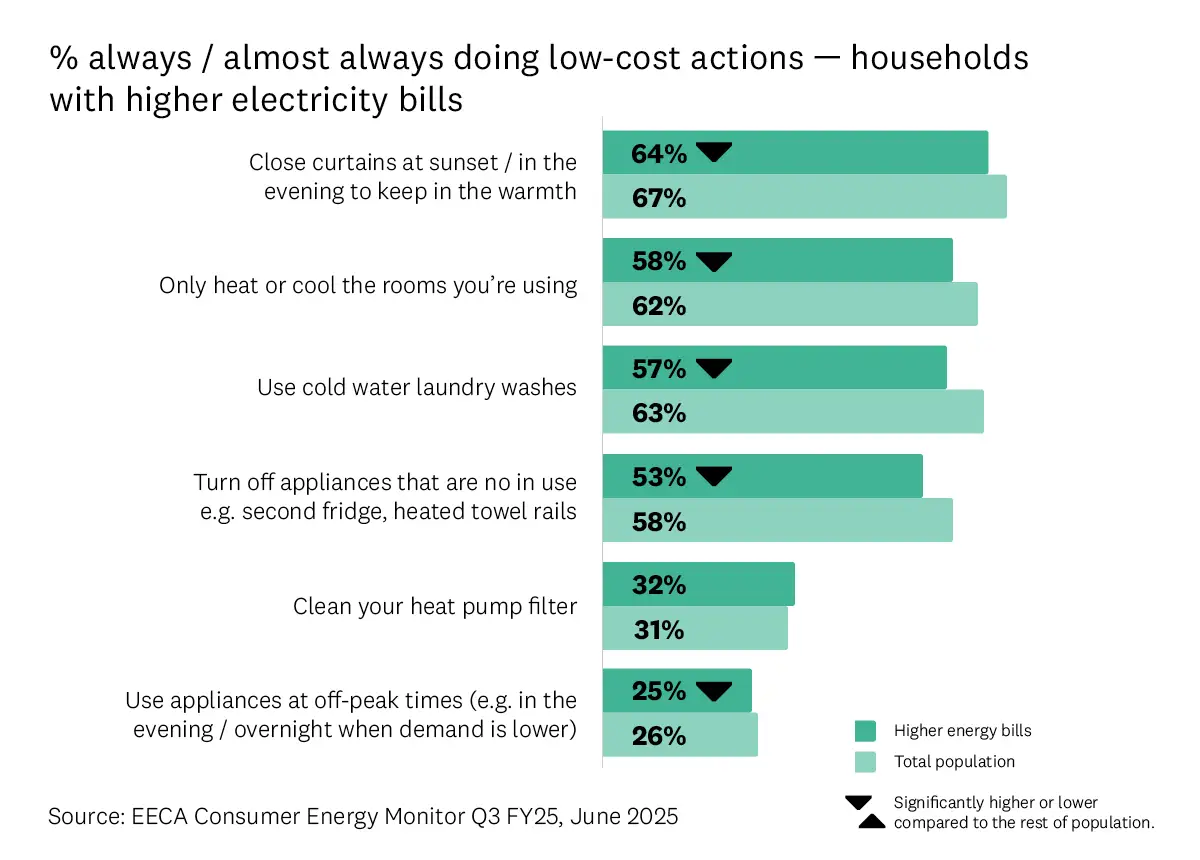
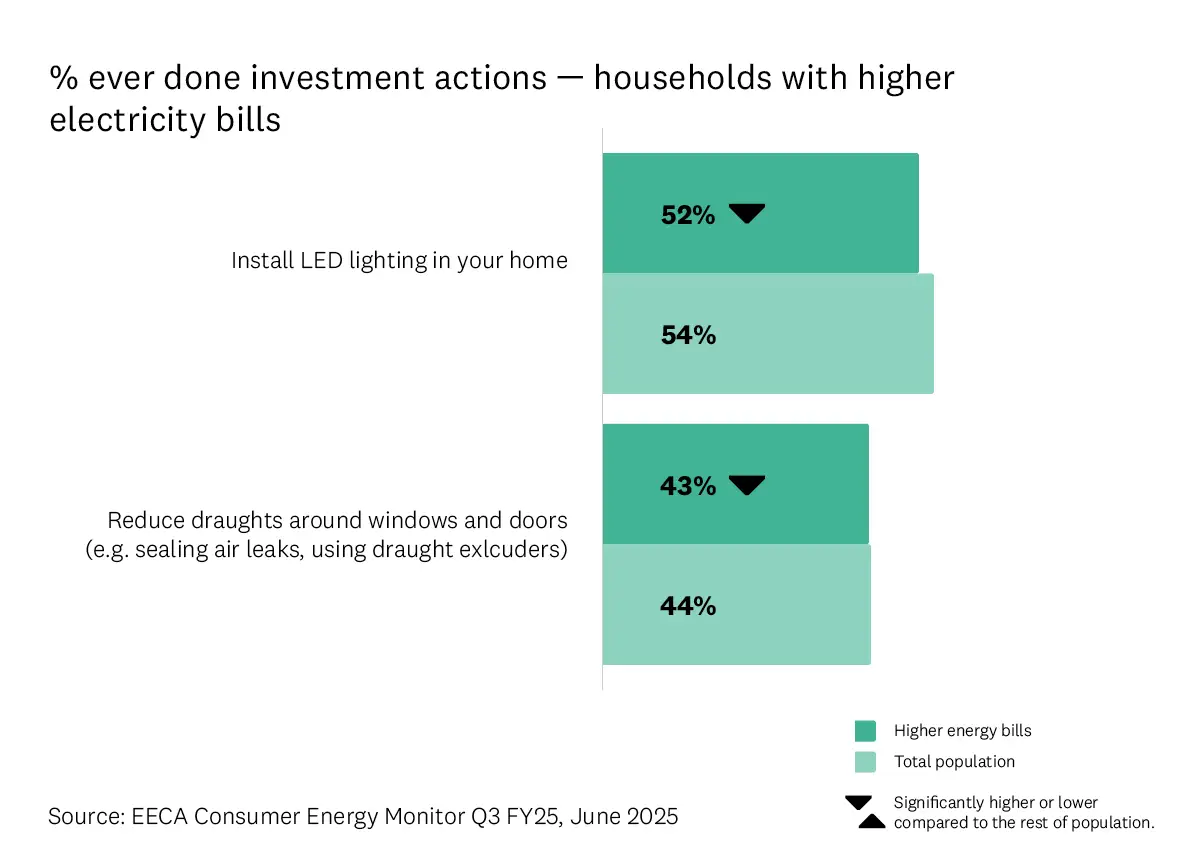
There is a lot of opportunity for households with children to increase their energy efficiency actions and lower their energy bills.
The graph above shows that these households are significantly less likely to undertake all but one energy efficiency action when compared average. In particular, they are less likely to only heat or cool rooms that are in use, or turn off appliances that are not in use. These are the top two energy savings actions a household can take:
